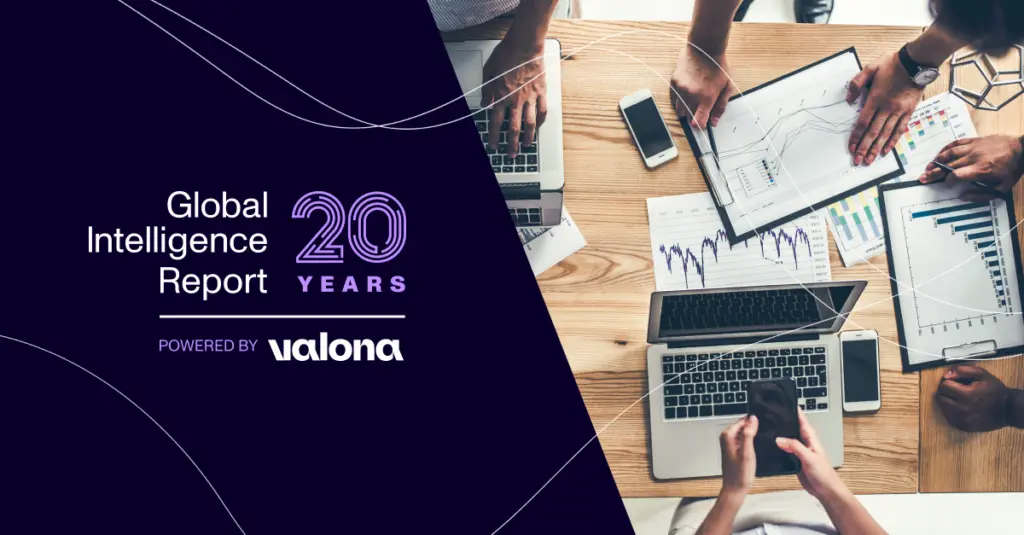
Applying Strategic Foresight for Organizational Success
Discover how applied strategic foresight equips organizations with tools like trend mapping, scenario planning, and predictive analytics to adapt, innovate, and drive growth.
Strategic foresight helps organizations stay ahead by preparing for future challenges and spotting new opportunities. It’s about being proactive, not reactive, and using the right tools to make smarter decisions. But figuring out how to apply foresight effectively can feel like a big task.
This article breaks down how organizations can use practical foresight techniques to succeed, including:
- Scanning for trends and disruptions
- Creating scenarios to stay future-ready
- Mapping trends for actionable insights
- Running collaborative foresight workshops
- Using predictive analytics and technology
- Embedding foresight into everyday strategy
What is applied strategic foresight?
Applied strategic foresight is the process of using specific tools and techniques to look ahead and prepare for what’s coming. Unlike traditional planning, which often reacts to immediate challenges, strategic foresight explores a range of possibilities to anticipate and adapt to future changes.
This approach empowers organizations to think beyond the present, proactively identifying potential challenges and opportunities. For example, businesses can use foresight to navigate market shifts, technological advancements, or disruptions in consumer behavior. It’s about creating actionable strategies that help organizations stay resilient and adaptable.
Strategic foresight goes beyond forecasting. While forecasting aims to predict specific outcomes, foresight encourages organizations to explore multiple scenarios, ensuring they are prepared for various potential futures.
By adopting applied strategic foresight, businesses can uncover emerging trends, mitigate risks, and plan for growth. It’s a proactive, dynamic way to stay ahead in a constantly evolving landscape.
“Applied foresight isn’t about predicting the future—it’s about preparing for it with confidence and clarity.”
Applied strategic foresight is essential for organizations looking to handle change and seize opportunities. It gives decision-makers the tools to plan ahead instead of just reacting to challenges as they come. By including foresight in their strategies, businesses can strengthen their ability to adapt and stay ahead of competitors.
Staying adaptable keeps businesses competitive because it allows them to adjust quickly to changes in their environment. Applied foresight helps organizations spot trends and shifts in customer preferences early, so they can refine their strategies and meet new demands. This proactive approach positions businesses as leaders, ready to outpace competitors and stay relevant.
Planning for the long term ensures businesses can grow in a sustainable way. Foresight enables decision-makers to focus on future goals rather than short-term fixes. This approach promotes innovation and prepares businesses to take advantage of opportunities while addressing challenges with clear, strategic thinking.
Identifying risks in advance helps businesses build confidence and make stronger decisions. Foresight allows organizations to anticipate issues like economic shifts or supply chain disruptions and prepare accordingly. With contingency plans in place, businesses can reduce uncertainty and respond effectively to unexpected events, ensuring stability and resilience.
Strategic foresight also creates pathways for growth by helping businesses spot new opportunities. Whether it’s exploring new markets or developing innovative products, foresight enables organizations to take well-planned steps toward expanding their reach and staying ahead in their industry.
“Applied foresight creates the agility to thrive in uncertainty, ensuring organizations can adapt and innovate no matter what the future holds.”
Ready to strengthen your strategy with applied strategic foresight? Discover how Valona’s market intelligence solutions can help you anticipate risks, adapt to change, and unlock growth opportunities. Explore resources and insights that empower your organization to thrive in uncertainty and stay ahead of the competition. Try it out and experience how simple it can be to stay ahead of the curve!
How organizations can use tools and techniques to apply strategic foresight
1: Environmental scanning for trends and disruptions
Environmental scanning means actively monitoring external factors that could affect your business. It’s about identifying shifts in technology, consumer behavior, industry regulations, and broader economic or social trends that may create risks or opportunities.
For example, a business in the food industry might track growing interest in plant-based diets and use that insight to develop new products that meet consumer demand. Similarly, monitoring regulatory changes can help organizations prepare for new compliance requirements before they take effect.
To make environmental scanning effective:
- Use SWOT analysis: Evaluate your strengths, weaknesses, opportunities, and threats to understand how external factors may impact your business.
- Apply PESTLE analysis: Examine political, economic, social, technological, legal, and environmental influences on your industry.
- Leverage news and reports: Stay updated on industry news and market research to identify emerging patterns early.
By consistently scanning the environment, businesses can act proactively rather than reactively, gaining an edge in adapting to change.
2: Scenario planning for future readiness
Scenario planning involves imagining different “what if” situations to prepare for a variety of potential futures. This method doesn’t try to predict a single outcome but instead helps organizations understand and prepare for a range of possibilities.
For example, a logistics company might explore scenarios such as fuel price increases, geopolitical tensions affecting trade, or breakthroughs in delivery technologies.
Testing strategies against these scenarios can reveal gaps and opportunities, helping the company strengthen its approach.
To create actionable scenarios:
- Identify key drivers of change: Focus on factors like market trends, technology, and customer preferences that are likely to shape the future.
- Build diverse scenarios: Develop narratives for optimistic, neutral, and challenging outcomes to cover a range of possibilities.
- Evaluate strategies: Test your current plans against each scenario to find areas where adjustments may be needed.
This approach ensures that organizations are ready to adapt quickly and remain resilient, no matter how the future unfolds.
3: Trend mapping for actionable insights
Trend mapping is about visualizing and prioritizing key trends to better understand their potential impact. It helps businesses turn observations into clear, actionable strategies by organizing trends in a way that highlights their relevance and urgency.
For instance, a fashion retailer noticing the rise of sustainability might map trends like eco-friendly materials, circular fashion practices, and consumer demand for transparency.
This process can guide product development and marketing strategies to align with customer expectations.
Key tools for trend mapping include:
- Foresight radars: Create visual diagrams that rank trends based on their urgency and potential impact on your organization.
- Horizon scanning frameworks: Categorize trends by areas like technology, society, and economy to ensure a balanced perspective.
Trend mapping allows organizations to focus on what matters most, enabling them to prioritize resources effectively and act with clarity. You can also quickly map and visualize alternative scenarios with Valona’s trend radars.
4: Collaborative foresight workshops
Collaborative workshops bring diverse teams together to explore future challenges and opportunities. These sessions encourage open discussion, combining insights from different departments to create strategies that are comprehensive and innovative.
For example, marketing teams can highlight shifts in customer behavior, while R&D teams might provide insights into upcoming technologies. When these perspectives are combined, they can spark ideas that would not emerge in isolation.
To run successful workshops:
- Define clear objectives: Set specific goals for the session, such as brainstorming solutions or mapping future trends.
- Use structured methods: Try techniques like Delphi surveys to gather expert input or group brainstorming to explore a range of ideas.
- Encourage diverse participation: Involve representatives from various departments to bring different viewpoints to the table.
Workshops create an environment where collaboration thrives, helping teams align on future goals while fostering creativity and innovation.
5: Predictive analytics and technology integration
Data and technology play a crucial role in making foresight actionable. Predictive analytics and AI tools allow businesses to analyze patterns, predict outcomes, and respond proactively to changes in the market.
For instance, predictive analytics platforms can forecast sales trends, helping companies optimize their inventory and improve supply chain efficiency.
AI tools can also analyze customer data to reveal hidden opportunities for personalized marketing or product enhancements.
To get the most from predictive tools:
- Use forecasting platforms: Analyze historical data to identify trends and predict future outcomes with accuracy.
- Leverage market intelligence software: Get real-time insights into competitor strategies and industry shifts.
- Test scenarios with simulations to model potential disruptions, such as supply chain delays, and plan solutions.
Integrating technology into foresight efforts enables businesses to act with precision, stay competitive, and adapt quickly to emerging challenges.
6: Embedding foresight into organizational strategy
Foresight works best when it’s embedded into daily operations and decision-making processes.
Instead of treating it as a one-time exercise, organizations should make foresight a regular part of planning, from quarterly reviews to long-term strategy meetings.
For example, a healthcare provider could use foresight insights to guide investments in digital health solutions by monitoring patient behavior and technological advances. This ongoing focus ensures decisions are grounded in forward-thinking strategies.
Steps to embed foresight into your strategy:
- Align with KPIs: Set key performance indicators that reflect future-focused goals, such as readiness for new market trends.
- Use foresight dashboards: Track trends and insights in real-time.
- Assign ownership: Designate teams or individuals to oversee foresight activities and ensure follow-through.
Embedding foresight into your strategy builds a proactive culture, ensuring your organization is always prepared for what’s next.
Future-ready strategies with applied strategic foresight
Businesses can stay ahead of challenges and embrace new opportunities with confidence by applying techniques like scenario planning, trend mapping, and predictive analytics. The key to success lies in starting small but thinking big.
Incorporate foresight into your planning sessions, test your strategies against diverse scenarios, and use technology to turn data into actionable insights. Each step strengthens your ability to adapt and thrive in an ever-changing environment.
If the idea of turning strategic foresight into a practical, actionable tool intrigues you, there’s more to uncover. Valona’s on-demand webinar, Master Competition with Strategic Foresight, dives deep into the methodologies and real-world applications of foresight in competitive environments. It’s packed with insights on identifying critical drivers, building scenarios, and using foresight to shape smarter decisions.
FAQ
What is applied strategic foresight?
Applied strategic foresight is the use of tools and techniques to anticipate future challenges and opportunities. Unlike traditional planning, which reacts to immediate problems, foresight explores multiple scenarios to prepare for long-term changes. By identifying trends and disruptions early, businesses can proactively create adaptable strategies, ensuring resilience and success in an unpredictable environment.
How does applied strategic foresight differ from traditional planning?
Traditional planning focuses on solving current challenges or achieving set goals. Applied foresight, on the other hand, explores a range of possible futures, helping organizations prepare for uncertainty. It uses tools like scenario planning and trend mapping to anticipate disruptions, uncover opportunities, and ensure strategies remain adaptable to evolving market conditions, enabling long-term growth.
Why is applied strategic foresight important for businesses?
Applied foresight allows businesses to stay competitive by anticipating changes in technology, customer preferences, and industry dynamics. It enables proactive planning, reducing risks and capitalizing on new opportunities. By integrating foresight into decision-making, organizations can adapt to disruptions, foster innovation, and achieve sustainable growth while maintaining an edge in an ever-changing market landscape.
What tools are commonly used in applied strategic foresight?
Organizations use tools like SWOT analysis for assessing external factors, scenario planning to test strategies against potential futures, and predictive analytics to forecast trends. Market intelligence platforms, such as Valona Intelligence, provide real-time insights into competitors and industry shifts, while simulations like AnyLogic model disruptions, helping businesses refine strategies and stay resilient.
How can organizations start implementing applied strategic foresight?
Begin by conducting environmental scans to identify key trends and disruptions. Use scenario planning to explore different futures, and leverage predictive tools for actionable insights. Involve diverse teams in collaborative foresight workshops and embed foresight into your strategy by aligning it with KPIs and decision-making processes. These steps build adaptability and prepare organizations for success.




